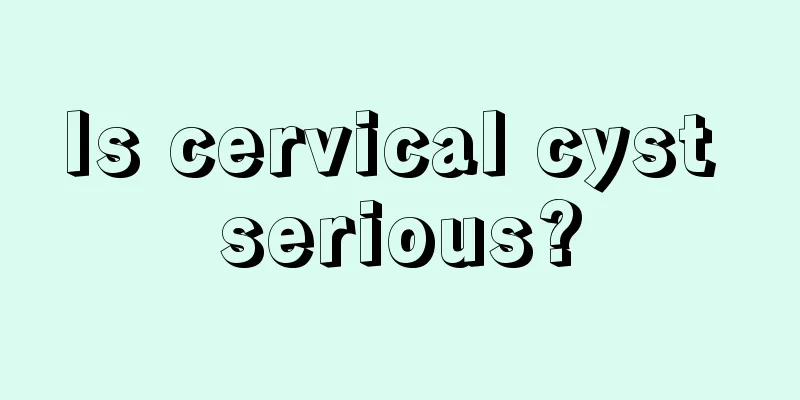What does it mean when multiple echo-free areas are visible on the cervix?

|
During the color Doppler ultrasound examination, it was found that there were several echo-free areas in the cervix, which generally refer to cervical polycystic ovary syndrome, also known as cervical polycystic ovary syndrome. This is because of the influence of chronic cervical inflammation, which blocks the entrance and exit of the cervical gland ducts, making it impossible for the secretions in the gland ducts to be discharged. Over time, the secretions expand and vaporize to form cysts. Generally, these cysts are small in size and do not cause any discomfort, so they do not need to be treated. Pay attention to hygiene during daily intercourse and actively treat chronic cervicitis. If the cyst is too large, it can be treated surgically. Several anechoic areas can be seen in the cervix, also known as cervical cysts, which are a manifestation of chronic cervicitis. It is a cyst caused by gland obstruction caused by cervicitis in the recovery process or due to damage. The fluid in it cannot flow out and is stored here. If the patient has no increase in female secretions, no irregular bleeding and other clinical manifestations, he or she can be observed. If the cyst is large, affects sexual life or is accompanied by an increase in secretions, physical therapy may be necessary. Common physical treatment methods include microwave heating, refrigeration or laser. However, before the actual operation, basic cervical cancer screening should be carried out, including TCT testing and HPV screening. The operation can only be carried out after the cervical screening result is negative. The echo-free zone of B-ultrasound examination generally refers to the cysts and eggs in the ovarian part of the uterus, or in clinical practice, the cysts in the cervix, which can be displayed as echo-free zone through B-ultrasound examination. This type of situation may be a physiological cyst for ovarian cysts, such as the progesterone produced after ovulation. It is recommended to observe again after the menstrual period. Usually, the cyst will disappear or become significantly smaller after the menstrual period. The anechoic area of the cervix is often caused by cysts in the cervix. If it is relatively small, such as less than one centimeter, and has no symptoms, there is no need to intervene or provide treatment. Regular maintenance is sufficient. It is recommended to do cervical cancer screening once a year to find out whether there are any diseases in the cervix and whether there is high-risk HPV infection. |
<<: Can cervical bleeding heal on its own?
>>: Can I wash my vulva with salt water?
Recommend
How do women maintain their uterus?
The uterus has a great impact on women's phys...
How to make disposable facial mask paper to hydrate and moisturize? What is the ranking of hydrating and firming skin care products?
Many people like to make facial masks. Healthy sk...
What are the causes of irregular menstruation?
Menstrual irregularity is a disease that women ar...
Does excessive and yellow vaginal discharge require treatment?
Leucorrhea is a normal physiological characterist...
Causes of lumbar muscle strain in women
In a family, women are the ones who do the most w...
Interesting Medicine Talk | Sodium Hyaluronate Eye Drops (with audio)
Your browser does not support the audio tag...
How to treat breast lumps
Mammary glands are tissues that grow on the skin ...
How long will it take to give birth at 33 weeks of pregnancy
For pregnant women, what they hope most is to exp...
What are the signs before a little girl's menstruation?
As women get older, they will have to face the si...
Pictures of Behcet's disease in women
Everyone loves beauty, especially women. From anc...
What are the detailed introductions of Haagen-Dazs mooncakes? What are the types of Haagen-Dazs mooncakes?
Haagen-Dazs mooncakes combine traditional Chinese...
Postpartum recovery exercises
With the development of medical technology, pregn...
What are the symptoms a few days before ovulation?
After a woman's secondary characteristics beg...
White core squeezed out of labia
Many people have recently discovered that they ha...
How to relieve the pain of dysmenorrhea?
Menstruation has been with us since we entered pu...









